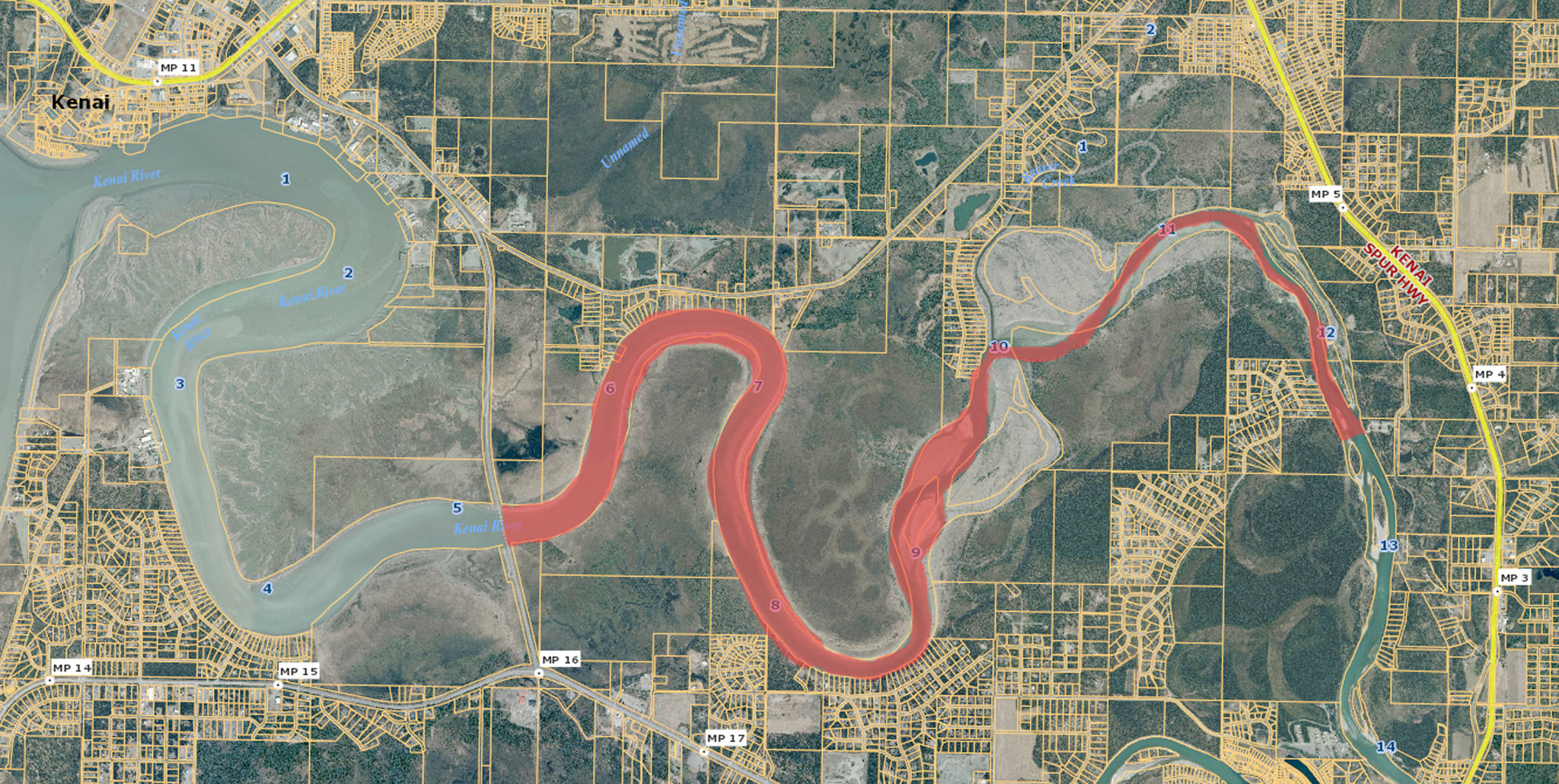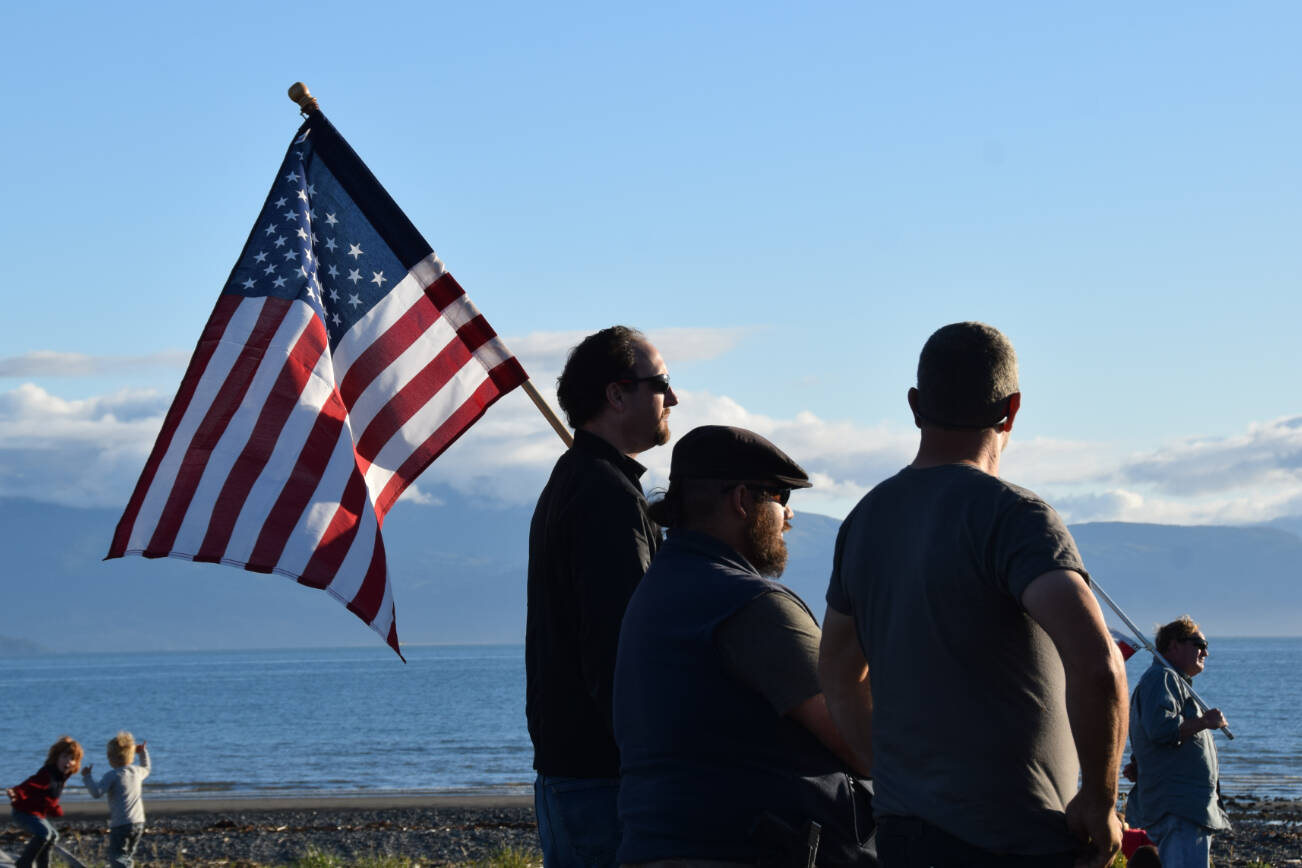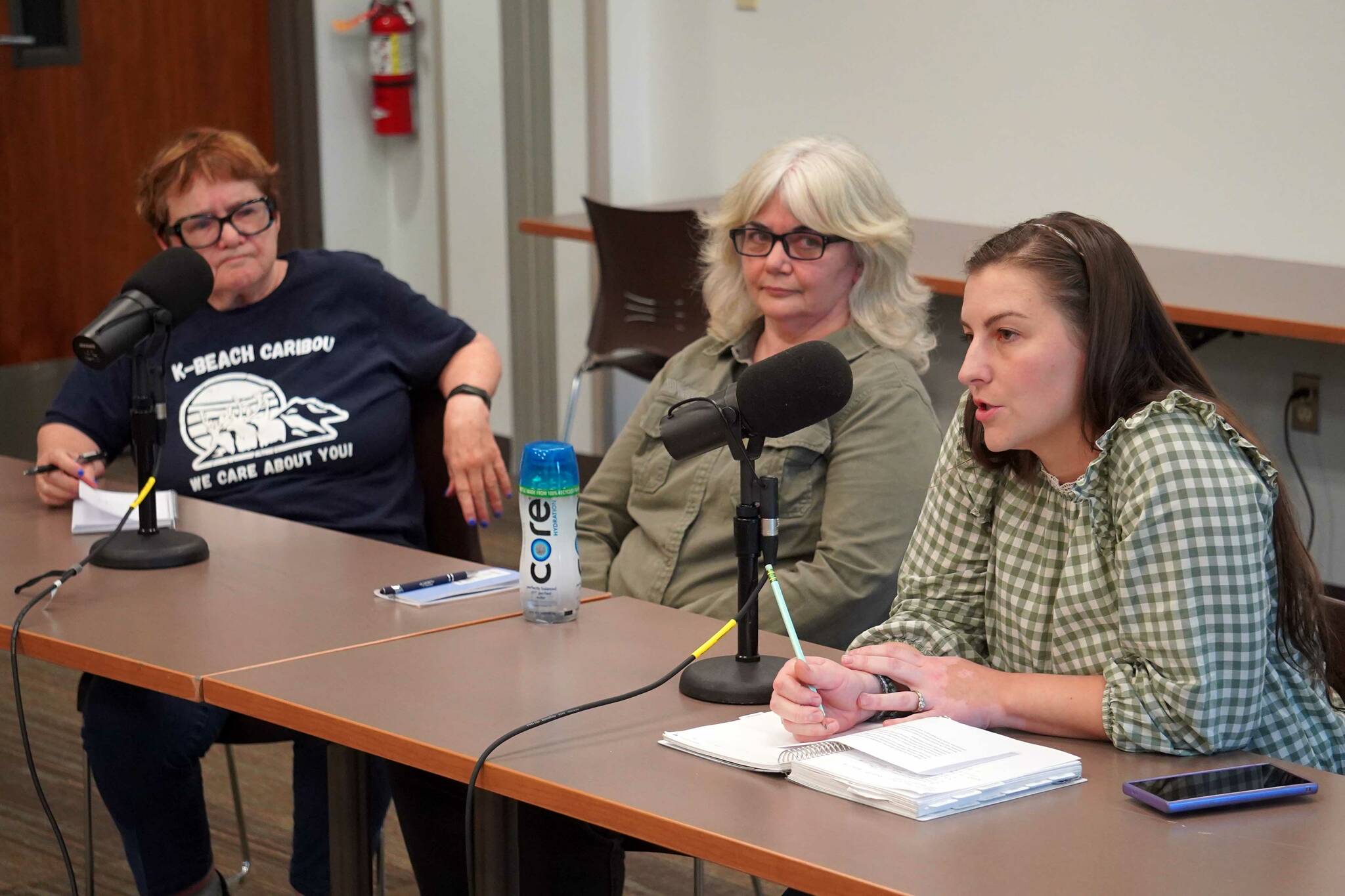Editor’s note: This article has been edited to clarify that the turbidity exceedances for the Kenai River were not contiguous but rather were spread throughout the month of July and to correct the mile number where the readings on the Kenai River were taken.
Kenai River users are raising questions about the validity of the Alaska Department of Environmental Conservation’s report finding that the river is too muddy during July.
The Department of Environmental Conservation released a draft report in December identifying several rivers, including the Little Susitna River and the Kenai River, as too turbid to meet the national clean water standards set by the U.S. Environmental Protection Agency. Turbidity, the measure of how much light permeates into the water column, is caused by solid material suspended in the water. Too much of it can damage drinking water quality, and at very high levels, it can impact aquatic life.
A section of the lower Kenai River exceeds the Clean Water Act standard for turbidity, according to the report, but with very specific parameters. For one, it only exceeds the standards for drinking water, primary recreation— such as swimming — and secondary recreation, such as wading. Additionally, it only exceeds the standards in those three years for 17–18 days spread throughout July, which is the time of highest activity on the river all year.
“Although the Kenai and Little Susitna rives are impaired due to turbidity, the overall health of both rivers is good,” said Division of Water Director Andrew Sayers-Fay in a news release. “We plan to take the time that is needed to gather additional data that would be helpful in better understanding the potential causes of the high turbidity and the degree to which we have a continuing problem.”
Until Jan. 29, the Department of Environmental Conservation is looking for comments on the decision to list, not necessarily what to do about the problem yet. Once the state submits the list, the EPA will review the listing methodology and either approve or disapprove it before forwarding it on to Congress along with the proposed listings for all 50 states, said Jeanne Swartz, environmental program manager with the Division of Water, during a joint committee meeting for the Kenai River Special Management Area advisory board on Jan. 11.
“Presumably we would start on a (mitigation plan) before two years have gone by, but there’s no set timeframe,” Swartz said.
The report directly correlates motorized boat traffic to increased turbidity, drawing on data collected by the environmental nonprofit the Kenai Watershed Forum from 2008–2010 in two sites, one at river mile 11.5 near the Eagle Rock boat launch and another upstream at approximately river mile 23. This was one of the main points the river users at the meeting took issue with — the data is nearly a decade old.
The area included in the impacted area is primarily a king salmon fishery. Since the data was taken, the river has been closed more regularly because of the lower king salmon returns, and the fishery is more dispersed than it used to be, said Joe Connors, the owner of Big Sky Charter and Fishcamp in Sterling and the vice-chair of the Kenai River Special Management Area Board.
Numbers of guides on the Kenai River are also significantly down from what they were in the mid-2000s, when participation peaked at 437 guides in 2006. The total number of guides registered climbed slightly from 2016–2017, reaching 347 from 340, according to Alaska State Parks guide numbers. However, those guides are more spread out as other fisheries developed to replace the king salmon fishery in July, Connors said. For example, more guides are fishing further upstream for sockeye from boats, as opposed to the mid-2000s, when nearly all the guide attention was on king salmon fishing from boats in the lower river and sockeye fishing was primarily from the banks.
“Not only did you have way more guides, they were all kind of stuck in that area because of Eagle Rock and the Pillars,” he said. “Now we have a dispersed fishery with more numbers.”
New boat regulations also kicked in fully in 2010, requiring all motor boats have four-stroke engines with 50 horsepower. The more highly powered boats can skim across the surface of the water more, displacing less water and leading to less wake, which erodes the banks less. The study did not account for that impact, said Ricky Gease, the executive director of the Kenai River Sportfishing Association.
Gease also said the part of the river the state’s report indicates is tidally influenced and more silted than further upriver, making the standard — the same one applied to all surface waters of the U.S. under the Clean Water Act — inappropriate. Several attendees at the Kenai River Special Management Area advisory board pointed out that the turbidity monitor used for the study was also relatively close to the bank, while the water in the middle of the river was much cleaner.
Connors agreed that it was inappropriate for the area. His concern was that the state’s recommended solution in the future would be to close the fishery more when the combination of the boating regulations and reduced traffic may have already solved the problem.
“Once you get listed, it’s time consuming, and in my mind, they can’t visualize what could be done short of closing fisheries and taking away opportunity,” he said.
Kenai City Manager Paul Ostrander raised the question of whether the Clean Water Act standards could be removed from the river to help solve the problem. The Kenai isn’t broadly used as drinking water, nor do people regularly swim in it, so those standards seem to not fit the river, he said. However, in preliminary discussions with the state, it became clear meeting the threshold to remove those standards would be hard to meet, he said — they would have to prove no one has ever, does not presently and will never drink from or swim in the Kenai River.
“I think we could make a strong statement as a city that all of our drinking water comes from wells and we have no intention to (use the river as drinking water) in the future,” Ostrander said. “However, we are only one component of it.”
Swartz said turbidity is not the same kind of pollution as hydrocarbon or heavy metals, but it is a standard the Clean Water Act requires the state to meet. Having an overly turbid river does impact its aesthetic value, even if the level of turbidity doesn’t necessarily impact aquatic life.
“I am really not going to apologize for clean water,” she said. “I really would like to make the point that there are a lot of people who come to the Kenai Peninsula as much to look at the natural beauty around as there is people who come to catch fish.”
Reach Elizabeth Earl at elizabeth.earl@peninsulaclarion.com.










